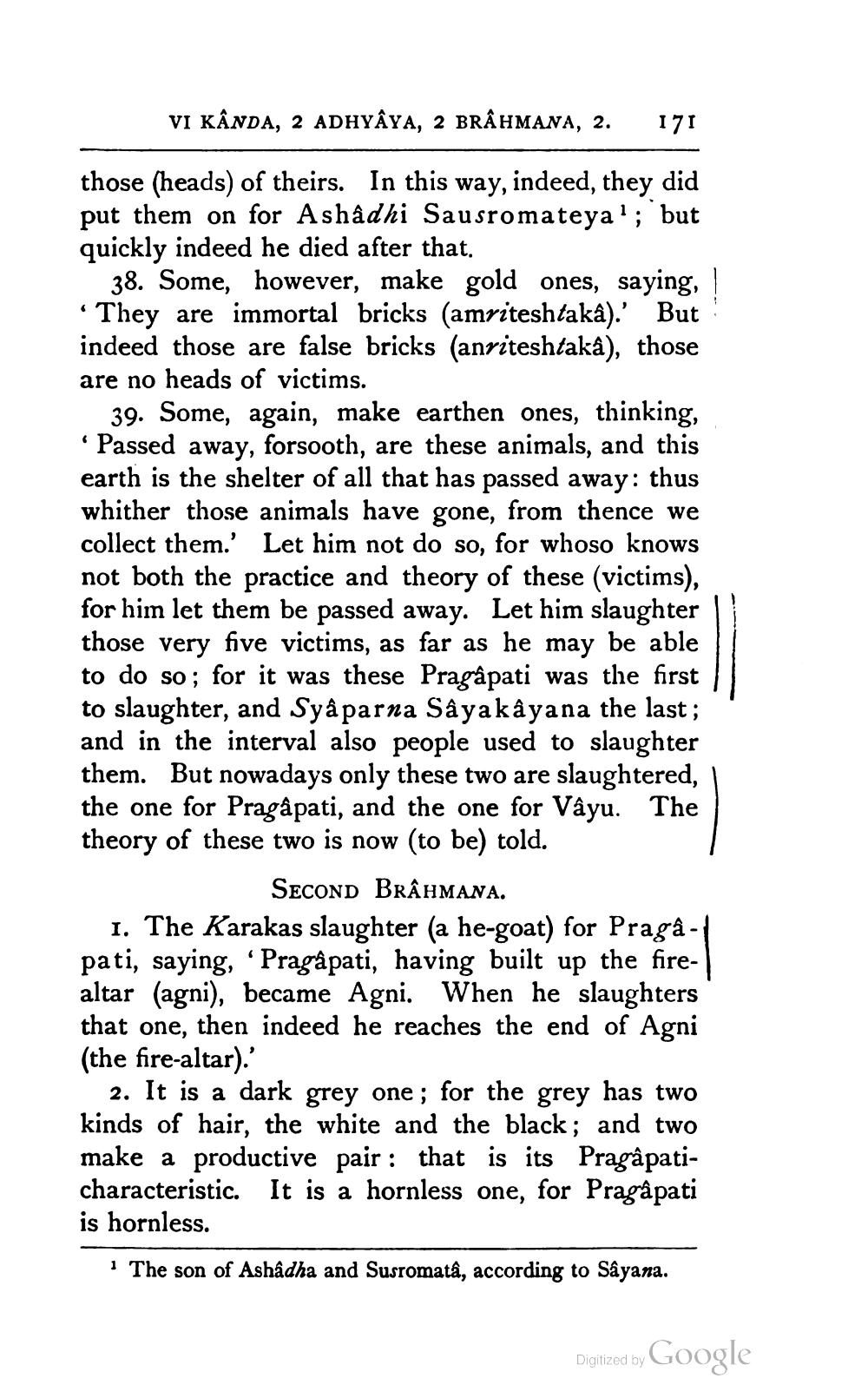________________
VI KÂNDA, 2 ADHYAYA, 2 BRÂHMANA, 2.
171
those (heads) of theirs. In this way, indeed, they did put them on for Ashâdhi Sausromateya'; but quickly indeed he died after that.
38. Some, however, make gold ones, saying, · They are immortal bricks (amriteshtaka).' But indeed those are false bricks (anriteshtaka), those are no heads of victims.
39. Some, again, make earthen ones, thinking, Passed away, forsooth, are these animals, and this earth is the shelter of all that has passed away: thus whither those animals have gone, from thence we collect them.' Let him not do so, for whoso knows not both the practice and theory of these (victims), for him let them be passed away. Let him slaughter those very five victims, as far as he may be able to do so; for it was these Pragâpati was the first to slaughter, and Syâ parna Sâyakâyana the last; and in the interval also people used to slaughter them. But nowadays only these two are slaughtered, the one for Pragâ pati, and the one for Vậyu. The theory of these two is now (to be) told.
SECOND BRÂHMANA. 1. The Karakas slaughter (a he-goat) for Praga - pati, saying, Pragàpati, having built up the fire altar (agni), became Agni. When he slaughters that one, then indeed he reaches the end of Agni (the fire-altar).
2. It is a dark grey one; for the grey has two kinds of hair, the white and the black; and two make a productive pair: that is its Pragâpaticharacteristic. It is a hornless one, for Pragậpati is hornless.
1 The son of Ashâdha and Susromatâ, according to Sâyana.
Digitized by Google




